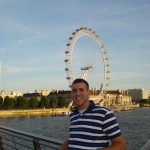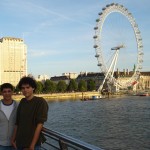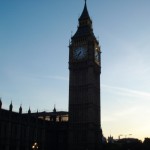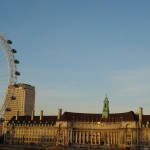Being an individual who thrives on organization and cohesiveness I have been very pleased with how everything in this course is beginning to connect. On Sunday I was part of the Docklands group that went through the museum and saw the African slavery/triangle trade exhibit. Viewing the exhibit was a very moving and captivating experience and I was very pleased to see it brought up today as part of our discussion. We have been given ample opportunities to take what we have seen on our adventures outside the classroom these past few days and bring them into our formal class discussions and today we took advantage of that opportunity. In my perfect world this is what all learning should be like. From learning through each others blog posts/thoughts in class we will not understand everything about London but we will get a greater understanding of London than if we were all charged to study everything about the place. Receiving information in small concentrated doses has been a great way for me to really focus on one subject at a time and absorb that material. I hope that continues.
On a completely different note, Aidan, Brandon and I went on a wonderful walk around the Thames on Saturday night. We took the Underground from Goodge street to Embankment and walked around that area for a bit. During our stroll we saw a lot of people dressed up in eclectic garb, singing, dancing and gyrating. One of the most entertaining moments of the night was when a group of five women dressed in matching skimpy maid outfits climbed on a boat and headed down the river. Four of the women were in their 20’s and one was about 60. One thing i’ve noticed here is that People here don’t seem to care much about age differences when it comes to social life. In the five days i’ve been here I’ve seen people from vastly different generations laughing together at pubs, sharing personal stories in a park and walking hand in hand. Regardless of their age everyone seemed excited about the weekend and the prospects of a good Saturday night. The streets were packed and it was hard to move more than five feet without bumping into someone. Overall we sensed embankment to be a fairly touristy area with many American style/fast food restaurants lining the streets.
After our walk uptown we headed down to the waterfront where we made our way across the Thames by way of the Hungerford bridge. While walking over the bridge we got some fantastic pictures of the London Eye. When we finally reached the other side of the bridge we took some time to observe the variety of buskers/street performers lining the streets. While observing a jam band I was nearly “roundhouse kicked” in the face by a man who was either very intoxicated or was missing a few marbles. At this point I decided that I had heard enough of the jam band and moved on to observe a magician locking himself in a suitcase and a man break-dancing with a bicycle helmet on. Both were very talented and entertaining. I like that London requires these buskers to receive licenses in order to display their acts. This ensures that only the cream of the crop are given the chance to perform . From my own brief busking experience back in high school I know all too well that not every busker is worthy of the limelight.
After hanging around County Hall for a while we decided to head back across the Thames. We completed the loop and took Westminster Bridge back just as the sun was setting, snapping some fantastic photos of Parliament, Big Ben, County Hall and the London Eye. After walking back to Embankment We got back on the Northern Line and headed to Leicester square where we decided to grab dinner at “The Spaghetti House”. Despite the overall quality of the food we decided we would probably not go back again. The reasoning behind this decision was twofold. The first reason was the food was a bit too expensive for its quality and the second was we had two waitresses taking care of us. The latter may sound like a good thing but neither waitress knew that the other one had us covered. This simply created confusion and left us with multiple bills at the end of the night.
From this walk I took a couple things that will stick with me. I became better oriented with the waterfront and the monuments that are set around it. I also learned about both the Westminster and Hungerford Bridge and would love to learn more about the history of bridges over the Thames. Another thing that stuck with me was the vibrant personalities I experienced during our walk. Between the street performers, the eclectic characters we saw in the streets and the man that almost knocked me out with his shoe I quickly learned that London has such a variety of personalities and life experiences to offer. There is an amazing cast of characters that lives within this city. We have now become a part of that cast as well. The million dollar question is where exactly do we fit into London’s present plot both as Americans, as young people and as students? This is something I will continue to explore during the rest of my time here.








